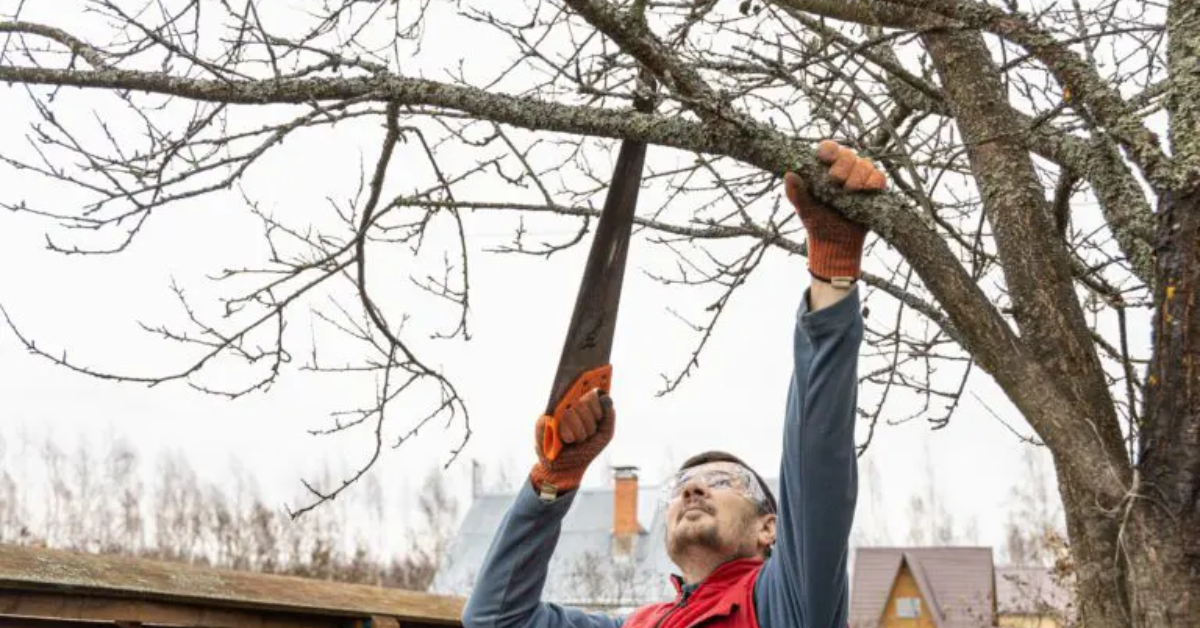Expert Tree Pruning Service: The Key to Healthy, Beautiful Trees
Trees are a vital part of any landscape, offering shade, beauty, and environmental benefits. However, to keep them healthy and looking their best, regular maintenance is essential. That’s where a Tree Pruning Service comes in.
Tree pruning is much more than just cutting off branches. It’s a strategic process carried out by professionals to improve tree structure, promote growth, and prevent potential hazards. In this blog, we’ll explore everything you need to know about professional tree pruning services, including their benefits, the different types of pruning, how often you should schedule it, and what to expect from a quality provider.
What Is Tree Pruning?
Tree pruning is the selective removal of branches to improve the health, appearance, and safety of a tree. Unlike tree removal, which involves taking down an entire tree, pruning focuses on enhancing the tree’s condition and extending its lifespan.
Pruning is a blend of science and art. It requires knowledge of tree biology and the skill to make precise cuts that stimulate proper growth and avoid damage.
Benefits of Professional Tree Pruning
Hiring a certified arborist or professional tree pruning service ensures your trees are not only visually appealing but also structurally sound and healthy. Here are some key benefits:
1. Promotes Tree Health
Pruning removes dead, diseased, or insect-infested branches, preventing further damage and allowing the tree to thrive.
2. Encourages Strong Growth
Strategic cuts help guide growth, allowing young trees to develop a healthy structure and reducing the risk of future issues.
3. Enhances Appearance
Pruned trees look well-maintained and symmetrical, boosting curb appeal and increasing property value.
4. Improves Safety
Removing weak or overhanging branches prevents them from falling during storms, protecting people, property, and power lines.
5. Increases Sunlight and Airflow
Thinning out dense canopies allows light and air to reach the inner branches and surrounding vegetation, which supports overall ecosystem health.
Common Types of Tree Pruning
Not all pruning is the same. The technique depends on the tree’s species, age, location, and specific needs. Here are the most common types:
1. Crown Cleaning
Removal of dead, diseased, or broken branches from the tree’s crown. This is the most common form of maintenance pruning.
2. Crown Thinning
Selective removal of branches to increase light and airflow through the canopy without changing its shape.
3. Crown Raising
Lower branches are removed to provide clearance for buildings, pedestrians, or vehicles.
4. Crown Reduction
Reduces the height or spread of a tree by cutting back to a lateral branch, often used when trees grow too close to structures or power lines.
5. Structural Pruning
Focused on young trees, this type trains the tree to develop a strong structure that can withstand wind, ice, and growth over time.
When Is the Best Time for Tree Pruning?
While minor pruning can be done year-round, the ideal time depends on the species and purpose:
-
Winter (Dormant Season): Most trees benefit from pruning during dormancy. This minimizes sap loss and reduces the risk of pest infestation.
-
Spring: Light pruning can help shape trees after new growth appears.
-
Summer: Good for removing defective limbs and slowing unwanted growth.
-
Fall: Often discouraged due to the increased risk of disease and slower healing.
Professional arborists can assess the best pruning schedule for your specific tree types.
How Often Should You Prune Your Trees?
Pruning frequency depends on tree species, age, and condition:
-
Young trees: Every 1–2 years for structural training.
-
Mature trees: Every 3–5 years for maintenance and health.
-
Ornamental trees: As needed for aesthetics and shaping.
An annual inspection by a tree care professional is a good way to stay ahead of any issues and determine when pruning is necessary.
DIY vs. Professional Tree Pruning
Many homeowners consider pruning trees themselves, but it’s not always safe or effective. Here’s why hiring a professional is the better choice:
Safety Risks
Pruning often requires working at heights with power tools. Without proper equipment and training, it can be dangerous.
Tree Damage
Improper cuts can lead to disease, decay, and weakened structure—doing more harm than good.
Knowledge of Tree Biology
Professionals understand how trees respond to pruning and know where and how to cut for optimal results.
Insurance and Liability
Licensed and insured companies protect you from liability in case of accidents or property damage.
Signs Your Trees Need Pruning
If you’re unsure whether it’s time to call a tree pruning service, look for these signs:
-
Overgrown or crowded branches
-
Dead, broken, or hanging limbs
-
Tree branches touching your home or roof
-
Crossing or rubbing branches
-
Lack of sunlight reaching the ground
-
Misshapen or unbalanced tree shape
Choosing the Right Tree Pruning Service
When searching for a trusted tree pruning company, consider the following:
1. Certification
Look for certified arborists through organizations like the International Society of Arboriculture (ISA).
2. Experience
Choose a company with a strong history of tree care services and knowledgeable staff.
3. Proper Equipment
Ensure they use modern, well-maintained tools and follow ANSI A300 pruning standards.
4. Insurance Coverage
Tree work is hazardous—verify that your provider has general liability and workers’ compensation insurance.
5. Transparent Pricing
A reputable provider offers detailed quotes outlining the scope of work and cost.
Sustainable and Eco-Friendly Pruning Practices
Responsible tree care includes environmental stewardship. Ask your tree service about sustainable practices such as:
-
Avoiding over-pruning
-
Recycling limbs into mulch
-
Preserving wildlife habitats
-
Preventing disease transmission between trees
Tree Pruning as Part of a Tree Health Program
Tree pruning should be part of an overall tree health care program that includes:
-
Regular inspections
-
Soil testing and fertilization
-
Pest and disease management
-
Mulching and watering practices
When you work with a full-service tree care company, you get a customized plan that keeps your trees in peak condition year-round.
Frequently Asked Questions (FAQ)
How much does professional tree pruning cost?
Costs vary based on tree size, complexity, location, and services needed. On average, pruning can range from $150 for a small ornamental tree to over $1,000 for large or hazardous trees.
Is pruning different from trimming?
Yes. Trimming is typically for aesthetic purposes (like shaping shrubs), while pruning focuses on tree health, safety, and structure.
Will pruning damage my tree?
When done properly, pruning strengthens a tree. Poor pruning, like topping or cutting too close to the trunk, can cause damage or disease.
Can you prune trees in the summer?
Yes, summer pruning is appropriate for controlling growth or removing hazardous branches, but major pruning is best done during dormant months.
Do all trees need pruning?
Not necessarily. Some trees naturally grow well without intervention, but most benefit from occasional pruning for health and aesthetics.
Final Thoughts
Trees are an investment in the beauty and value of your property. With proper care, including professional tree pruning services, they can thrive for generations. Pruning helps trees maintain their health, prevents safety hazards, and ensures they grow strong and beautiful.
At Woods Forestry Solutions, we offer expert tree pruning tailored to your trees’ species, age, and structure. Our team is committed to delivering top-quality care that aligns with both your goals and the tree’s long-term health.
Contact us today to schedule a consultation and let us help your trees reach their full potential.







